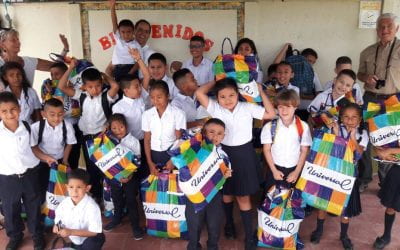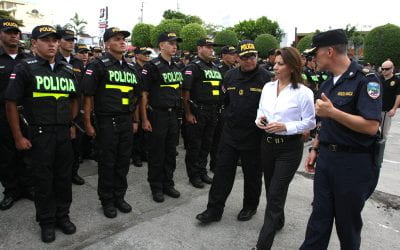The Game of the Little Devils
Documentary photography about the most important cultural celebration of the Brunca people.
The game recreates a historical event: the fight to the death between the Spanish invader (represented by the bull) and the Indigenous community (represented by the little devils) who cover their faces with one of the most important elements of the celebration, the boruca mask, carved in balsa wood.
The Brunca territory is located in the South Pacific of Costa Rica, in Buenos Aires de Puntarenas. Its current population is approximately 2560 inhabitants (INEC 2013), distributed between the settlements of Boruca and Rey Curré.
The activity takes place once a year, from December 31 to January 2 in the community of Boruca and, since 1979, during the first weekend of February in Rey Curré.
Photographer Jose Diaz can be reached at Instagram @josediaz2491.
He has spent many years documenting the celebration.
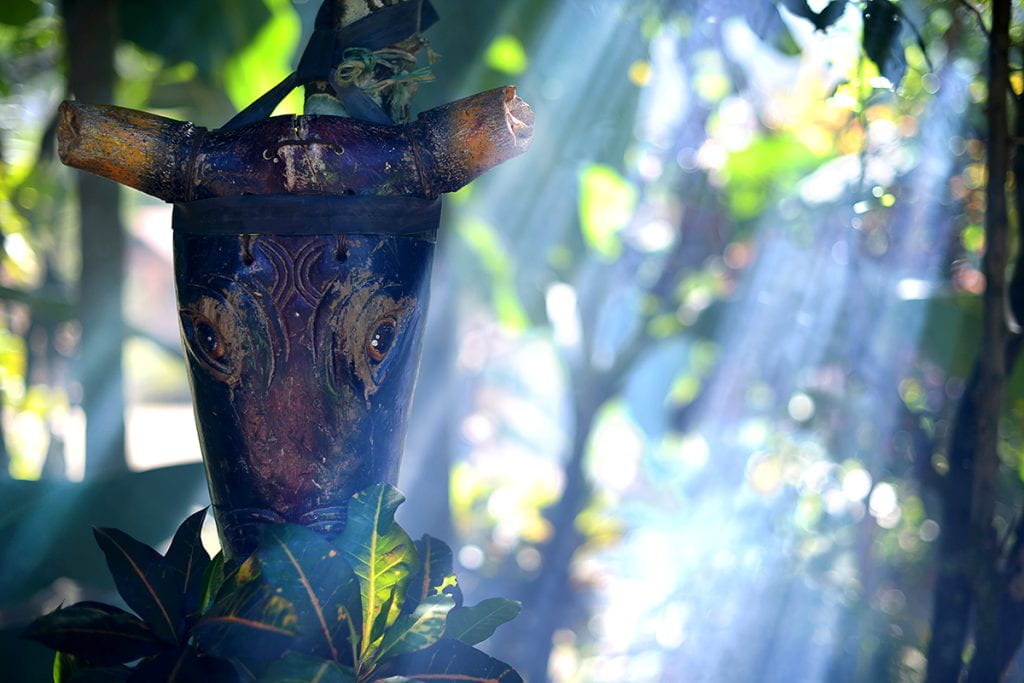
Saman (bull, in the Brunca language), reminds us of the slavery and pain of the Brunca people.
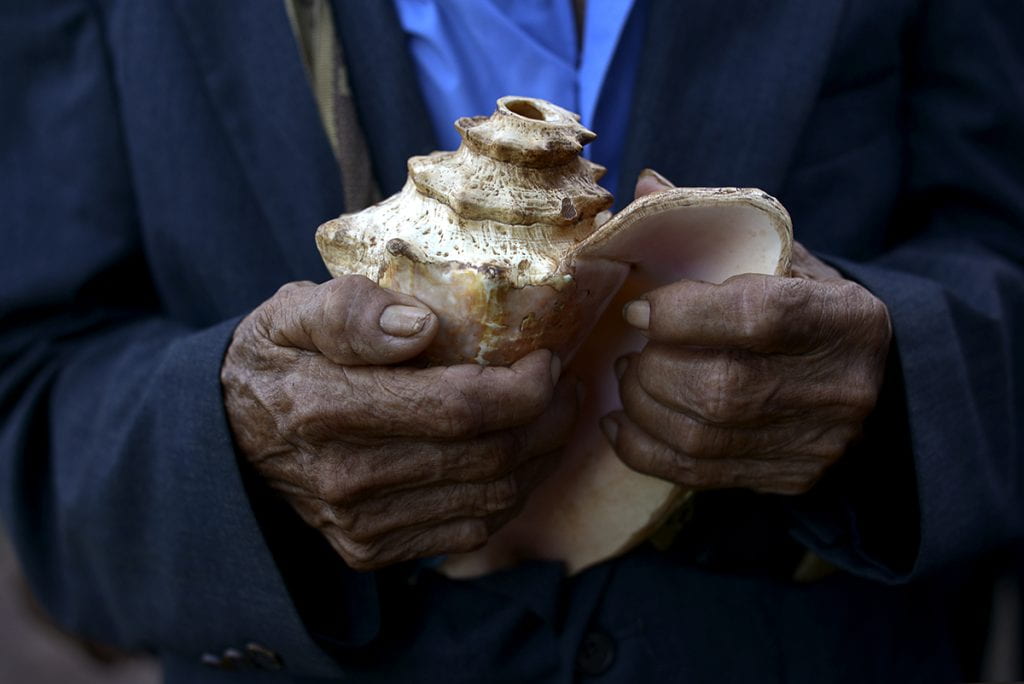
The call of the snail in the mayor’s possession is an order for a birth. A birth in the darkness of the night. Its sound is a command for the little devil to fight, protect, die and revive for his people in ashes, for his Brunca people.

The central objective of the game is the fight between the bull and the devil. Throughout the game, the diablitos and the bull confront each other: the latter tries to knock down those who provoke him.
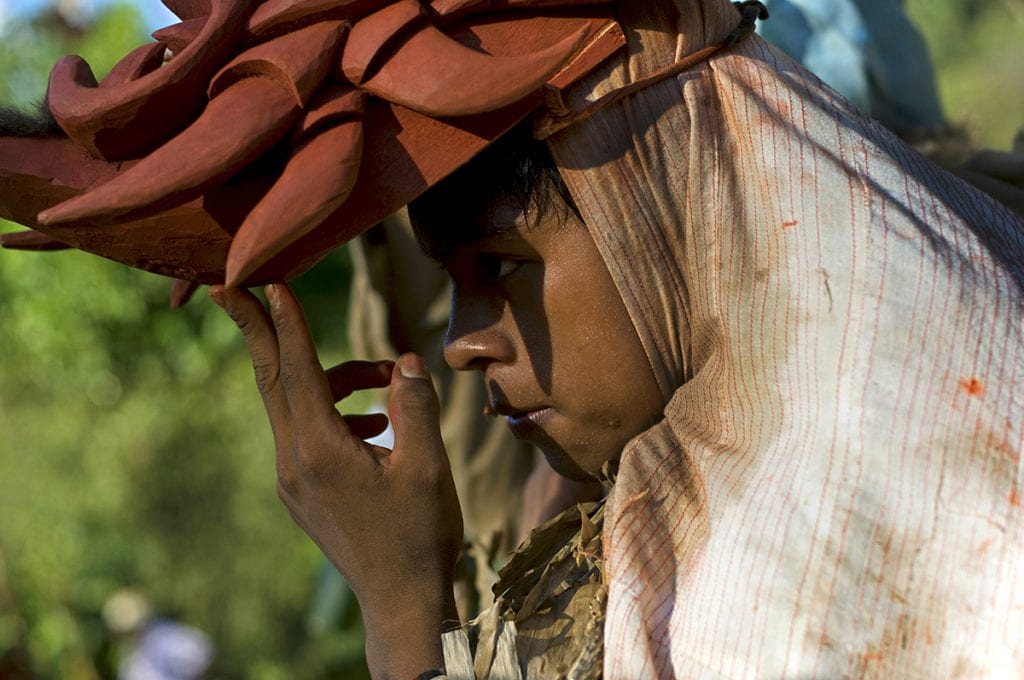
The mask is pride, culture, spirituality, joy, pain, sweat, feeling, sadness. The mask worn is the face of the people, the face of the warrior.
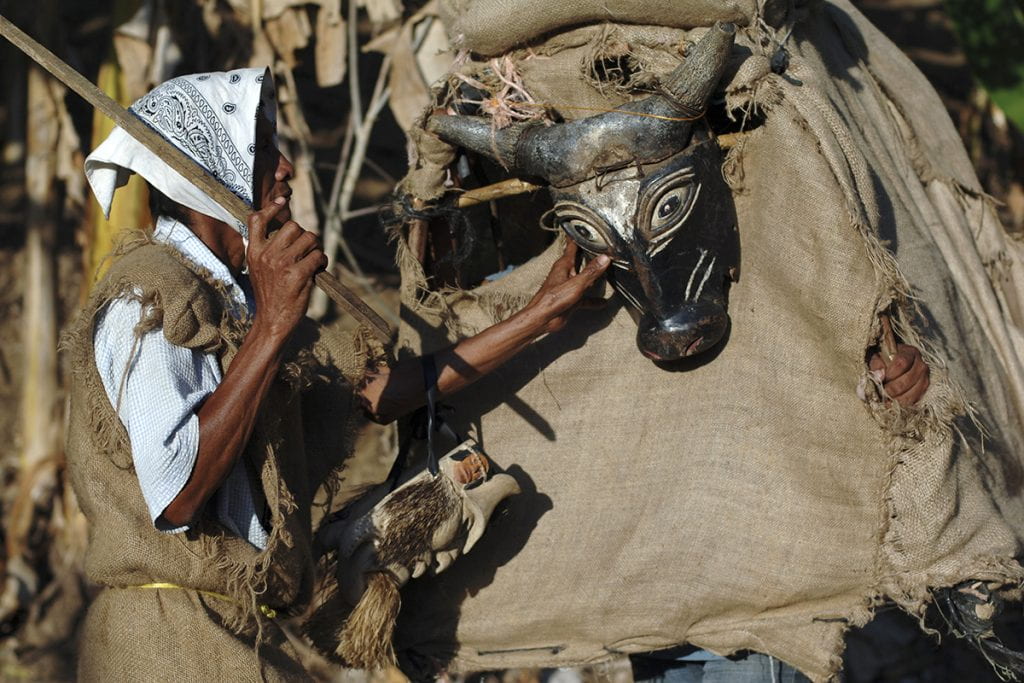
The arreadores are directly responsible for the smooth running of the game, they must control the discipline and are in charge of executing the corresponding punishment to the devil who breaks the rules.

The fight is over in this courtyard. The players rest for a few minutes or perhaps continue at once, once again walking the paths between the houses with their sad cries.

The young farmer Andrey Serrano Rojas must like all his fellow devils obey the Major’s orders, they cannot lag behind and they cannot get drunk.
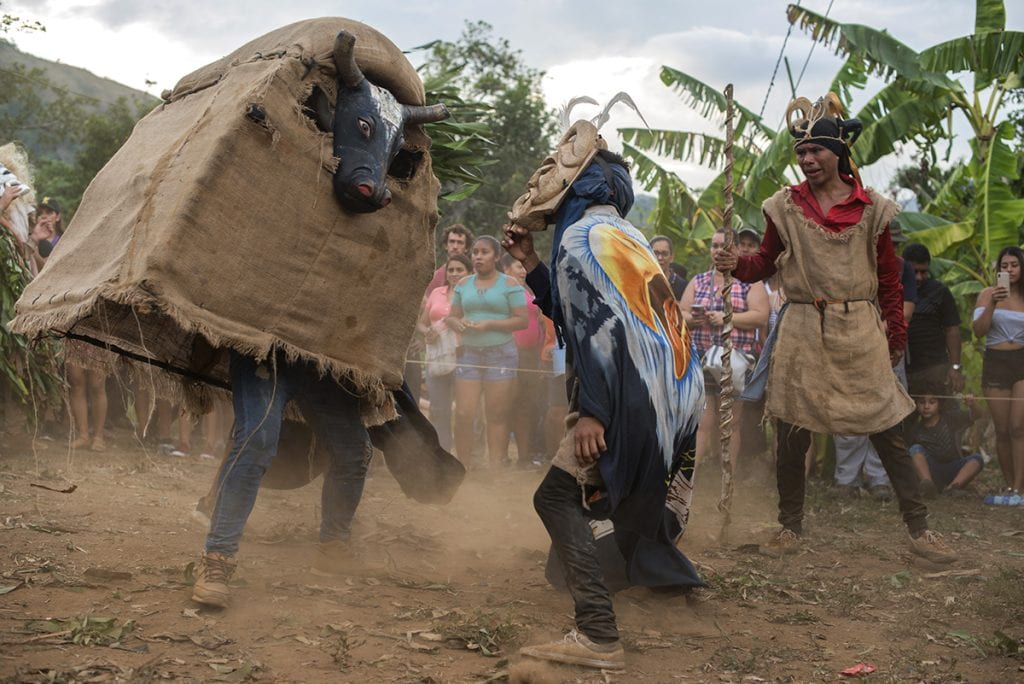
Since this is a rough game, injuries are common, especially to the face, especially when the bullfighter manages to hit the diablito’s mask.

The bull flees and takes refuge in the bush, the search begins.

The “corpse” of the burning bull is exhibited, its meat is given away, its blood is the chicha that everyone drinks. The Indigenous people have triumphed.
El Juego de los Diablitos
Por Jose Díaz
Fotografía documental sobre la fiesta cultural más importante del pueblo Brunca.
El juego recrea un hecho histórico: la lucha a muerte entre el invasor español (representado por el toro) y la comunidad indígena (representada por los diablitos) que cubren sus rostros con uno de los elementos más importantes de la celebración, la máscara boruca, tallada en madera de balsa.
El territorio Brunca está ubicado en el Pacífico Sur de Costa Rica, en Buenos Aires de Puntarenas. Su población actual es de aproximadamente 2560 habitantes (INEC 2013), distribuidos entre los asentamientos de Boruca y Rey Curré.
La actividad se realiza una vez al año, del 31 de diciembre al 2 de enero en la comunidad de Boruca y, desde 1979, durante el primer fin de semana de febrero en Rey Curré.
El fotógrafo Jose Díaz puede ser localizado en Instagram @josediaz2491.
Lleva muchos años documentando la celebración.

Saman (toro, en idioma Brunca), hace recordar con sus embestidas la esclavitud y el dolor del pueblo brunca.

El llamado del caracol en posesión del Mayor es una orden para que haya un nacimiento. Un nacimiento en la oscuridad de la noche. Su sonido es un mandato para que el diablito luche, proteja, muera y reviva por su pueblo en cenizas, por su pueblo Brunca.

El objetivo central del juego es la lucha que se da entre toro y diablito. A lo largo de todo el recorrido los diablitos y el toro se enfrentan: este último trata de tumbar a aquellos que lo provoquen.

La máscara es orgullo, es cultura, espiritualidad, alegría, es dolor, es sudor, es sentimiento, tristeza. Las máscara usada es el rostro del pueblo, es el rostro del guerrero.

Los arreadores son los responsables directos de la buena marcha del juego, deben controlar la disciplina y son los encargados de ejecutar el castigo correspondiente al diablo que rompa las reglas.

La lucha ha terminado en este patio. Los jugadores descansan unos minutos o tal vez siguen de una vez, nuevamente recorriendo los caminos entre las casas con sus gritos tristes.

La lucha ha terminado en este patio. Los jugadores descansan unos minutos o tal vez siguen de una vez, nuevamente recorriendo los caminos entre las casas con sus gritos tristes.

Por tratarse de un juego rudo, son comunes las lesiones, especialmente en la cara, sobre todo cuando el torero consigue golpear la máscara del diablito.

El toro huye y se refugia en el monte, comienza la búsqueda. Capturado, amarrado y sometido los diablitos llevan al centro del pueblo para darle muerte.

El “cadáver” del toro en llamas es exhibido, su carne se regala, su sangre es la chicha que beben todos. Los indígenas han triunfado.
Related Articles
Homecoming and Public Education: The Cancel Culture of (class time) in Costa Rica
When I returned home on my sabbatical, I couldn’t stop thinking about Svetlana Boym’s extraordinary book, El futuro de la nostalgia.
Crisis of Citizen Insecurity in Costa Rica: A Challenge to the Model of Demilitarized Democracy
I began my political and public service career thirty years ago as Minister of Public Security, the first woman to ever hold that post in my country, Costa Rica.
Editor’s Letter: Is Costa Rica Different?
Is Costa Rica different?

